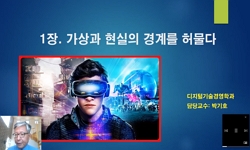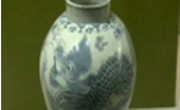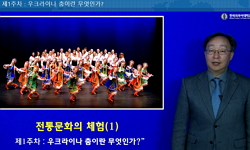This paper aims to focus specifically on restoring the installation works of Nanjido and Meta-Vox, two small art groups in the 1980s that have only been discussed as an example of post-modernism and as a background for Korean contemporary art since th...
http://chineseinput.net/에서 pinyin(병음)방식으로 중국어를 변환할 수 있습니다.
변환된 중국어를 복사하여 사용하시면 됩니다.
- 中文 을 입력하시려면 zhongwen을 입력하시고 space를누르시면됩니다.
- 北京 을 입력하시려면 beijing을 입력하시고 space를 누르시면 됩니다.

1980년대 소그룹 난지도와 메타복스의 설치미술: 표현매체로서의 물성, 그리고 현실과 전통 = The Installation Art of Nanjido and Meta-Vox in the 1980s: Materiality, Reality, and Traditions
한글로보기https://www.riss.kr/link?id=A108889364
-
저자
이윤수 (홍익대학교)
- 발행기관
- 학술지명
- 권호사항
-
발행연도
2023
-
작성언어
Korean
-
주제어
1980년대 미술 소그룹 ; 난지도 ; 메타복스 ; 설치미술 ; 물성 ; 신표현주의 ; 현실 ; 전통 ; Korean art in the 1980s ; small art groups ; Nanjido ; Meta-Vox ; installation art ; materiality ; Neo-expressionism ; reality ; tradition
-
등재정보
KCI등재
-
자료형태
학술저널
-
수록면
273-300(28쪽)
- 제공처
-
0
상세조회 -
0
다운로드
부가정보
다국어 초록 (Multilingual Abstract)
This paper aims to focus specifically on restoring the installation works of Nanjido and Meta-Vox, two small art groups in the 1980s that have only been discussed as an example of post-modernism and as a background for Korean contemporary art since the 1990s. It also aims to examine their characteristics and aspects. In particular, it reconsiders their works by raising questions about their limitations as pointed out by literature, such as “following the search for materiality as before” and “expanding only the formal level.” Their installation art originated from a desire to challenge the rigidity of the Korean art scene, which was divided into Dansaekhwa and Minjung Art. While their works are relevant to the influence of neo-expressionism, an international trend at that time, they also have a distinctive characteristic that sets them apart from overseas art: their method of using the materiality of everyday objects as the main means of expression. This characteristic stems from appropriating the materiality that was a main characteristic of Korean art in the 1970s. Moreover, in terms of content, the works of Nanjido reflect the reality of the time, which was urbanized and industrialized, and the works of Meta-Vox explore various Korean traditions. In this way, Nanjido and Meta-Vox endeavored to overcome the rigidity of Korean art through the “appropriation of materiality” and “reflection of reality and tradition,” in contrast to previous evaluations by literature. Their works were essential in the context of the Korean art scene at the time, demonstrating their attempts to explore new art and transform Korean art from within the inner context, not just through the imitation of overseas art.
국문 초록 (Abstract)
본 연구는 그동안 한국 포스트모더니즘의 사례 그리고 1990년대 이후 동시대 미술의 배경으로서만 다루어진 1980년대 미술 소그룹 ‘난지도’와 ‘메타복스’의 설치미술을 구체적으로 복원...
본 연구는 그동안 한국 포스트모더니즘의 사례 그리고 1990년대 이후 동시대 미술의 배경으로서만 다루어진 1980년대 미술 소그룹 ‘난지도’와 ‘메타복스’의 설치미술을 구체적으로 복원하고 그 특징과 양상을 고찰하는 것을 목적으로 한다. 특히 그동안 그들의 한계로 지적되었던 기성세대의 특징인 물성 탐구의 답습 그리고 형식적 층위만의 확장이라는 평가에 의문을 제기하고, 두 소그룹의 설치미술에 대해 재고하고자 한다. 일상 사물의 물성을 표현의 주요 수단으로 삼은 그들의 설치미술은 단색조 회화와 민중미술로 양분된 한국미술계의 경직성에 대한 반감 그리고 자유로운 미술 표현의 갈구로부터 시작되었다. 이들의 미술은 당시 국제적 조류였던 신표현주의의 영향과 무관하지 않지만, 그 해외미술과 차별되는 지점이 존재한다. 그것은 물성을 표현의 수단으로 삼았다는 것이다. 이와 같은 특징은 난지도와 메타복스의 작가들이 1970년대 한국미술의 특징인 물성을 전용함으로써 만들어진 것이었다. 그리고 내용적인 면에서, 난지도는 도시화·산업화된 당대 현실을 반영하였고, 메타복스는 다양한 전통을 탐색하고 적용하는 특징을 보였다. 이처럼 난지도와 메타복스는 기존의 평가와는 달리 ‘물성의 전용’과 ‘현실의 반영과 전통의 적용’을 통해 한국 현대미술의 경직성을 타계하려 하였다. 이는 당시 한국미술계의 맥락에서 발생할 수밖에 없었던 것으로, 단순한 해외 미술의 도입을 통해서가 아닌 내적 흐름 안에서 새로운 미술을 탐색하고 한국 현대미술을 전환하고자 했던 그들의 시도를 보여준다.
동일학술지(권/호) 다른 논문
-
메이지 시대의 요괴 및 유령 이미지와 신경병과의 관계 고찰
- 한국근현대미술사학회(구 한국근대미술사학회)
- 정상연
- 2023
- KCI등재
-
더 넓은 ‘우리’의 미술사를 향해서 - 백름, 『재일조선인미술사 1945-1962 : 미술가들과 표현 활동의 기록』(연립서가, 2023)
- 한국근현대미술사학회(구 한국근대미술사학회)
- 목수현
- 2023
- KCI등재
-
조각의 근대성과 현대성: 한국근현대조각사 서술의 쟁점들
- 한국근현대미술사학회(구 한국근대미술사학회)
- 홍지석
- 2023
- KCI등재
-
- 한국근현대미술사학회(구 한국근대미술사학회)
- 신정훈
- 2023
- KCI등재




 DBpia
DBpia






